Glancing at the map of West Java, our next destination, Batu Karas, didn't look so far away. In reality, however, getting there by public transportation requires a 3.5 hour train ride to Bandung, another 3 hours in a different train to Banjar, a 2 hour bus ride to Pangandaran, a 1 hour mini-bus ride to the turn-off, and a 15 minute motorcycle ride to the place we’d be staying. This trip might seem to be mathematically possible to accomplish in a day, but the realities of Indonesian travel made this outcome dubious. Still, there was nothing to do but set out and hope for the best, so we hopped on the train out of Jakarta on Monday morning. The first leg was going well, cruising in style on the "executive class" train to Bandung. The AC kept us cool in Java’s heat and the large windows gave us an excellent view of island’s densely populated yet beautiful countryside. No sooner had we gotten off the train than we hit our first obstacle. Although the lady at the ticket counter in Jakarta assured us there would be plenty of trains from Bandung to Banjar, we discovered there were no tickets available for three days. Just when it looked like our goal of waking up on the beaches of Batu Karas was out of reach, our saviors arrived in the form of two friendly Dutch travelers also trying to reach Batu Karas. They suggested the possibility of renting a private car directly there, and split between the four of us, this previously out-of-budget option became doable. After seven hours of non-stop small talk with our loquacious non-English speaking driver (exhausting, but a great Indonesian work-out), we pulled into Batu Karas and found a hotel near the beach.
Batu Karas is a small fishing village that had the luck to possess a very nice sand bottom point break in a little bay about a kilometer from the town center
. The point break brought the surfers, the surfers brought money, and the bay became a small but happening spot for foreign and Indonesian tourists alike. Batu Karas also has a healthy population of local Indonesian surfers, who are for the most part both very talented and very friendly. Jessica and I had locals say good morning as they surfed by while we paddled out. This is not something you’re likely to encounter much in say, Hawaii or Southern California. The bay is particularly popular with vacationing Indonesians during holidays, like, for example, the last week of school break for Indonesian students, which was when we happened to arrive. Shortly after sunrise, large tourist buses would start streaming into the town, and the beach would fill with exuberant vacationing Indonesians. I’m pretty confident that at times the number of people on the beach alone surpassed the number of permanent Batu Karas residents. Watching the visitors flop around in the water in their large goofy life vests (most can’t swim), it was hard to fault them for the raucous fun-filled atmosphere they created
. When you’re on the tourist track you get used to being surrounded by Western tourists most of the time, so it was great to see Indonesia’s citizens kicking back and having some fun.
Sometimes it was a bit harder to forgive the revelers when the hordes of boogy boarders, inner-tubers, and swimmers congregated just below the take-off spot for the surf break, oblivious to the danger posed by surfers attempting to catch waves in the chaos. Batu Karas is known for its mellow point break. In surfing, point breaks are great because they create a wave with a much more consistent take-off and shape than most spots where waves just break on the beach. The down side is that they tend to get crowded because everyone’s trying to get on the waves in the same few places. It’s also tough when the surfer catching the wave has to slalom through the frolicking mob of clueless non-surfers also trying to get in on the wave action, trying not to run anyone over. All this excitement made early morning surf sessions the best time for getting good surfing in
. After the first day I instituted a 5:15 wake-up time, allowing us to catch the sunrise on the waves. Jessica is definitely not an early morning girl, so the fact that she (somewhat) willingly accompanied me to the beach as the sun was coming up speaks loudly of her surf experience – she rocked it. While I’ve watched her catch waves at other surf spots, in Batu Karas she was riding waves from the point to the end of the beach. Our surf guide estimates this distance to be over 1000 feet – a very long ride. The friendly waves certainly made these rides easier than they might be at a more challenging break, but her developing skill level is undeniable – there were plenty of well-muscled young men who flopped around in the waves ineffectually while she surfed comfortably by. From now on Jessica can call herself a surfer with pride.
Halfway through our week-long surf extravaganza we decided to check out the other local attraction, the Green Canyon. Catching a boat up a nearby river, we motored up a beautiful canyon lined with giant ferns, vines, and palm trees until we reached the end of the navigable portion of the river
. There we disembarked onto slippery lava rocks packed with more tourists, mostly Indonesian. The canyon walls narrowed and arched high overhead, and from that point on it felt like we were in more of a cave than a canyon. While it was pretty, it seemed like there were just too many people and too little space, but the Indonesian guy who accompanied the boat captain convinced us to swim up the river, with him as our guide. As soon as we had swam a short distance from the crowd we were very happy we had agreed. The fresh water was soothing after all the ocean water we had been in. Narrow gaps towards the top of the canyon let in streaks of sunlight which illuminated falling water originating from hidden springs in the rocks above. As we swam, we were followed by our guide, who had thrown on a life vest and was doggy paddling after us with one hand while the other hand held Jessica’s camera, wrapped in a plastic bag, above his head. At certain points in the river we had to climb back onto rocks to progress up the river and only then did we realize with some horror that we were not the only ones in the canyon
. On every surface, and especially near the water, thousands upon thousands of tiny transparent crabs seethed around us. Climbing out of the water onto the rocks guaranteed getting covered by them. Our guide repeated “no problem, no problem,” and with no other way forward we simply had to accept carrying dozens of the strange bug-like creatures with us at all times. We scrabbled over rocks, swam through pools, and even came upon a strange mushroom-like rock formation that stuck out 20 feet over the river that provided an excellent platform to jump into the river. Eventually as the river became more difficult to follow we had to turn back, and we drifted back to the boat, accompanied in the current by thousands of our new crustaceous friends.
After mellowing for a few days, the surf began to pick back up for the last few days of our stay in Batu Karas. The incoming swell brought good waves, but also a less welcome marine visitor. I first saw one when it was pointed out to me by an Aussie surfer who called it by the Australian name “blue bottle,” as he moved away from it
. It looked like a fairly non-descript jellyfish-like thing. We had seen plenty of jellyfish since arriving in Indonesia; some had a bit of a sting but they were not really that big of a deal. This one looked pretty much like a small plastic bottle with a clump of bluish stringy stuff on the bottom of it. I saw a few more that day, but it wasn’t until that night when an American surfer asked me if I had seen the Portuguese Man o’ War, a name I did know, that I realized just how dangerous those little guys were. Interestingly, a Man o’ War isn’t actually a jellyfish, it’s something called a siphonophore, which is an organism that’s made up of several individual creatures that work in unison to do the thing’s nefarious business.
The following day we walked out onto the beach in the morning and noticed hundreds of Man o’ War washed up on the beach. A disconcerting sign for sure, but the waves looked good, there were people in the water, and it seemed conceivable that they had washed in at night and were no longer in the water
. Wrong. I caught a wave and on my way back out I saw Jessica ride a wave in to shore, looking comfortable and confident. As I waited for the next set to roll in I noticed that Jessica was on the shore at the edge of the water, shaking her hand in the broken surf. Not a good sign. When I got to the beach Jessica was already in a lot of pain, as the Man o’ War’s blue spines released their poison into her hand and arm. Heading back out she had paddled right into a pack of them and got stung trying to get out of the swarm. We got her back to the room and applied a hot compress, which is one of the few things you can do to reduce the pain of the sting, but my surf partner was out of commission for the rest of the day. I tried to do everything I could do to make her feel better, but I couldn’t really imagine the level of pain she was feeling.
In the afternoon I went back out into the water and it appeared that the Man o’ War had decided to go terrorize a beach somewhere else (they’re not self propelling, so they really just go where the tides, currents, and wind take them)
. While waiting for a wave I spoke to a surfer who said he had paddled beyond the regular take-off point and had seen swarms of them, but we both shrugged it off, hoping they would drift elsewhere. The waves were getting better and the crowd was relatively small. A few waves later I started to see a few Man o’ War here or there, but as long as you kept your eyes open it seemed easy enough to avoid them. Anyway, it was our last full day in Batu Karas and I wasn’t going to be scared off by a stupid senseless thug of a creature. While paddling out I noticed three Man o’ War in the paddle-out zone and I was pointing them out to another surfer when a wave pushed a fourth I hadn’t noticed towards me. Instinctively I rolled to the left, using my board to shield my body from the horrible thing. Unfortunately, I failed to look left before I did so and rolled right into another unseen Man o’ War. Sharp pain exploded in my left hand, and as I scrambled back onto my board and away I was stung on my other hand, my leg, and my cheek
. The sting areas were covered with tiny blue barbs, which were full of the creature’s toxins. You have to try to splash them off in the water without rubbing the barbs further into your skin, which just releases more poison. Unfortunately they do not come off easily, and much inadvertent rubbing occurred.
While the stings were intensely painful, some of the best waves I have had the opportunity to surf started coming in. I pushed the pain away and caught some of my best, longest waves ever, with long rides and plenty of space to work the surfboard around on the wave. Scarily, however, patches of thirty or more Man o’ War started appearing in groups. While earlier you could try to maneuver around them, if you ended up in one of those patches you would be in big trouble. After an awesome wave (for me, not Kelly Slater) that carried me down the point and across the beach break, I stood on the beach trying to reconcile two very strong impulses. The first was the fact that I had never ridden such great waves in such uncrowded conditions (it wasn’t a coincidence there weren’t many people out)
. The second and increasingly powerful sensation was that during the first thirty minutes since I was stung, the pain went from being localized on the stings themselves to an intense throbbing pain from my hands to my forearms. The best way I can think to describe it is that it felt like my hands had been slammed repeatedly in a car door. Even more distressing was the fact that the venom had recently crept from my hands and forearms, through my triceps, into the area around my armpits, where it had hunkered down and was making my entire body feel like it was being stretched out on a torture rack. I knew that Man o’ War stings are only fatal in rare cases, but it was still quite distressing observing the creeping spread of the venom. Finally I gave it up, leaving a few surfers still behind in the water to nurse my wounds with Jessica back at our place. That night just about every surfer who ventured into the water had a Man o’ War sting story to tell. These are nasty, nasty creatures.
Surf Extravaganza - Shen's Guest Post!
Monday, July 18, 2011
 Batu Karas, Central Java, Indonesia
Batu Karas, Central Java, Indonesia
Other Entries
-
1Arrival
May 2851 days prior Nusa Lembongan, Indonesiaphoto_camera19videocam 0comment 3
Nusa Lembongan, Indonesiaphoto_camera19videocam 0comment 3 -
2Exploring the Nusa
May 3049 days prior Nusa Lembongan, Indonesiaphoto_camera15videocam 0comment 3
Nusa Lembongan, Indonesiaphoto_camera15videocam 0comment 3 -
3Kami belajar Bahasa Indonesia!
Jun 0345 days prior Seminyak, Indonesiaphoto_camera18videocam 0comment 3
Seminyak, Indonesiaphoto_camera18videocam 0comment 3 -
4New Friends
Jun 0642 days prior Seminyak and Lovina, Indonesiaphoto_camera9videocam 0comment 4
Seminyak and Lovina, Indonesiaphoto_camera9videocam 0comment 4 -
5Good time to go
Jun 1038 days prior Seminyak, Indonesiaphoto_camera11videocam 0comment 0
Seminyak, Indonesiaphoto_camera11videocam 0comment 0 -
6Ubud
Jun 1533 days prior Ubud, Indonesiaphoto_camera41videocam 0comment 0
Ubud, Indonesiaphoto_camera41videocam 0comment 0 -
7Bali-Bye
Jun 1731 days prior Denpasar, Indonesiaphoto_camera11videocam 0comment 8
Denpasar, Indonesiaphoto_camera11videocam 0comment 8 -
8The Wild East
Jun 1929 days prior Waingapu and Pulupanjang, Indonesiaphoto_camera10videocam 0comment 2
Waingapu and Pulupanjang, Indonesiaphoto_camera10videocam 0comment 2 -
9Surf Camp
Jun 2325 days prior Kallala, Indonesiaphoto_camera17videocam 0comment 6
Kallala, Indonesiaphoto_camera17videocam 0comment 6 -
10Skipping through the village
Jun 2622 days prior Waikabubak, Indonesiaphoto_camera24videocam 0comment 0
Waikabubak, Indonesiaphoto_camera24videocam 0comment 0 -
11Interminable Ferries and Magical Lakes
Jun 3018 days prior Moni, Indonesiaphoto_camera34videocam 0comment 0
Moni, Indonesiaphoto_camera34videocam 0comment 0 -
12Housewarming, Flores-Style
Jul 0216 days prior Bajawa, Indonesiaphoto_camera48videocam 0comment 1
Bajawa, Indonesiaphoto_camera48videocam 0comment 1 -
13Komodo Part I: Land
Jul 0711 days prior Labuanbajo, Indonesiaphoto_camera26videocam 0comment 2
Labuanbajo, Indonesiaphoto_camera26videocam 0comment 2 -
14Komodo Part II: Sea
Jul 0711 days prior Labuanbajo, Indonesiaphoto_camera11videocam 0comment 0
Labuanbajo, Indonesiaphoto_camera11videocam 0comment 0 -
15Not in Kansas
Jul 117 days prior Jakarta, Indonesiaphoto_camera9videocam 0comment 2
Jakarta, Indonesiaphoto_camera9videocam 0comment 2 -
16Surf Extravaganza - Shen's Guest Post!
Jul 18 Batu Karas, Indonesiaphoto_camera27videocam 0comment 7
Batu Karas, Indonesiaphoto_camera27videocam 0comment 7 -
17The Joys of Travel
Jul 191 day later Yogyakarta, Indonesiaphoto_camera1videocam 0comment 3
Yogyakarta, Indonesiaphoto_camera1videocam 0comment 3 -
18Path to Enlightenment (or at least better grammar)
Jul 224 days later Borobudur, Indonesiaphoto_camera39videocam 0comment 5
Borobudur, Indonesiaphoto_camera39videocam 0comment 5 -
19Visa Run
Jul 235 days later Singapore, Singaporephoto_camera7videocam 0comment 1
Singapore, Singaporephoto_camera7videocam 0comment 1 -
20River Cruising
Jul 279 days later Pangkalan Bun, Indonesiaphoto_camera49videocam 0comment 3
Pangkalan Bun, Indonesiaphoto_camera49videocam 0comment 3 -
21Into the Wild
Aug 0316 days later Kutai National Park, Indonesiaphoto_camera32videocam 0comment 5
Kutai National Park, Indonesiaphoto_camera32videocam 0comment 5 -
22Surf Safari - SHEN GUEST POST #2!!!
Aug 1023 days later Kuta, Indonesiaphoto_camera34videocam 0comment 2
Kuta, Indonesiaphoto_camera34videocam 0comment 2 -
23Honeymooning At Last
Aug 1427 days later Gili Meno, Indonesiaphoto_camera14videocam 0comment 3
Gili Meno, Indonesiaphoto_camera14videocam 0comment 3 -
24Happy Postscript
Aug 1629 days later Washington DC, United Statesphoto_camera4videocam 0comment 4
Washington DC, United Statesphoto_camera4videocam 0comment 4
Comments
2025-05-22
Comment code: Ask author if the code is blank

 Batu Karas, Central Java, Indonesia
Batu Karas, Central Java, Indonesia

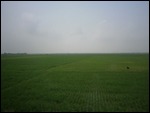
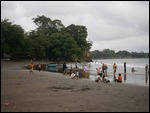
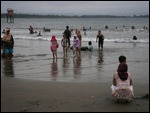
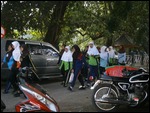

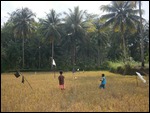
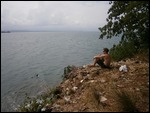
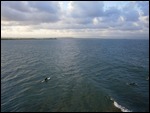



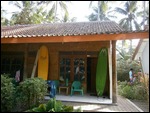
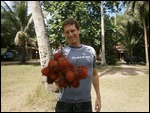
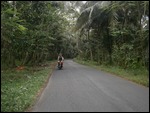

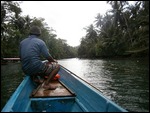
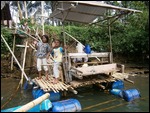
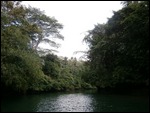
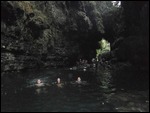
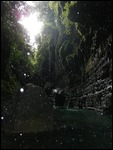
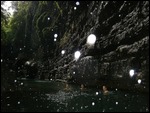
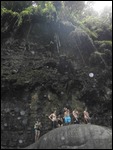
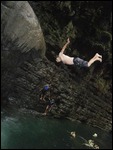
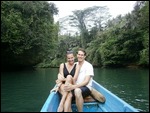
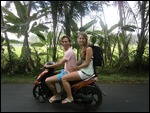
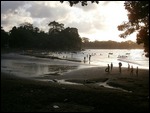
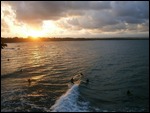

kathleen sampson
2011-07-21
GREAT GUEST BLOG! Have you recovered from your encounter with the MAN'O'WAR?
Sheila Burkhardt
2011-07-21
Now I know you are crazy ! I don't surf but I love the water and even the
small jellyfish keep me on shore. I was stung in Corsica by a baby jellyfish
and by arm was swollen and painful for 2 days SURFING MUST BE POWERFUL
Pati
2011-07-21
I guess catching waves at a good break must be as good a high as heroin!!!! Talk about out of touch with reality - I am dumbfounded that you would even think about staying in the water after being stung and after seeing how much pain Jessica was enduring!!!!!
I have to agree with Sheila - you are crazy Shenandoah!!!! Hope you both have recovered - I really enjoy your blog !
Mary Ann
2011-07-22
What a great blog. You and Jessica are intrepid travelers. I will have to agree with my sisters though, the thrill of surfing must be extremely powerful to disregard such intense pain. I hope you and Jessica have both recovered.
Jeycob
2011-07-29
Dagger!!!! Epic post Shen!! Amazing story about the surfing AND the Man O' War! Wow dude! Are you kidding me? But I fully support your manly impulses to keep shredding the rad in spite of the pain. Ha ha. Amazing.
By the way - I just read a post about Man O' War stings and it said heat's not effective really - only lots and lots of water and scrubbing and ice for pain. But that's specifically for the Man O' War: http://www.aloha.com/~lifeguards/portugue.html
You could always pee on yourself.
Man. Good times. Looking forward to reading your other posts!
love to you guys.
J